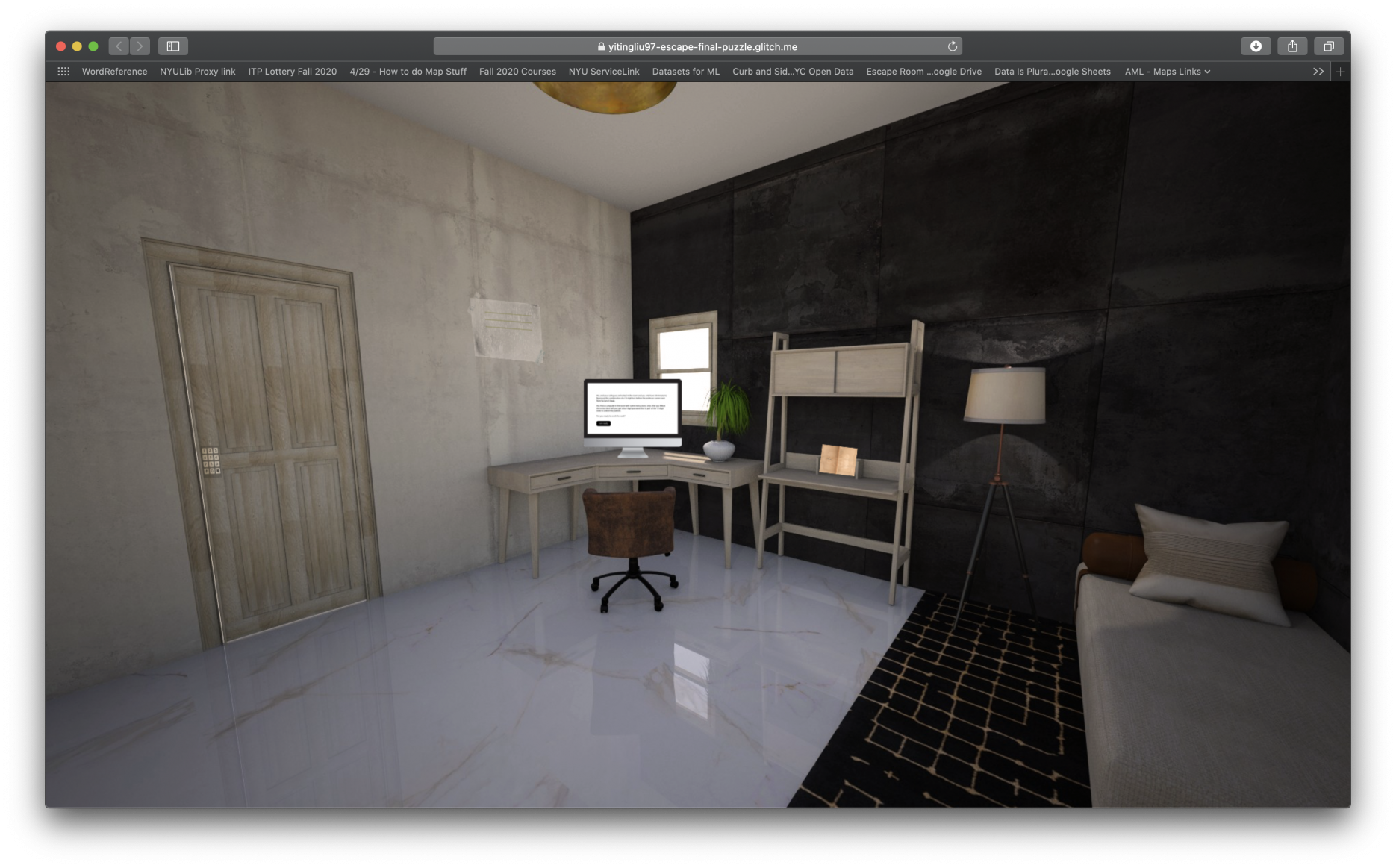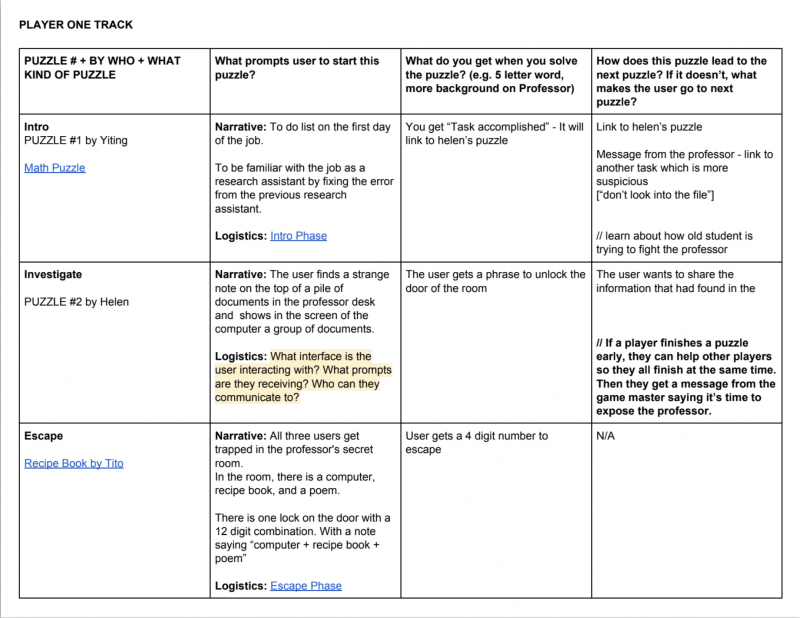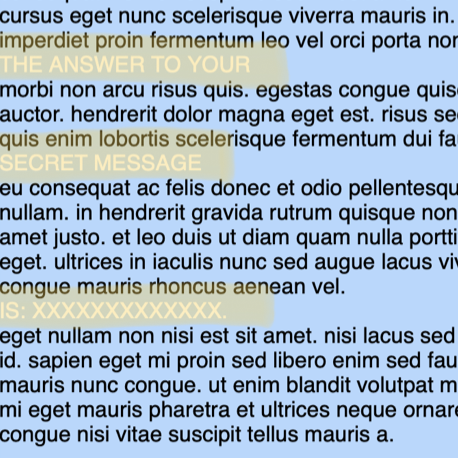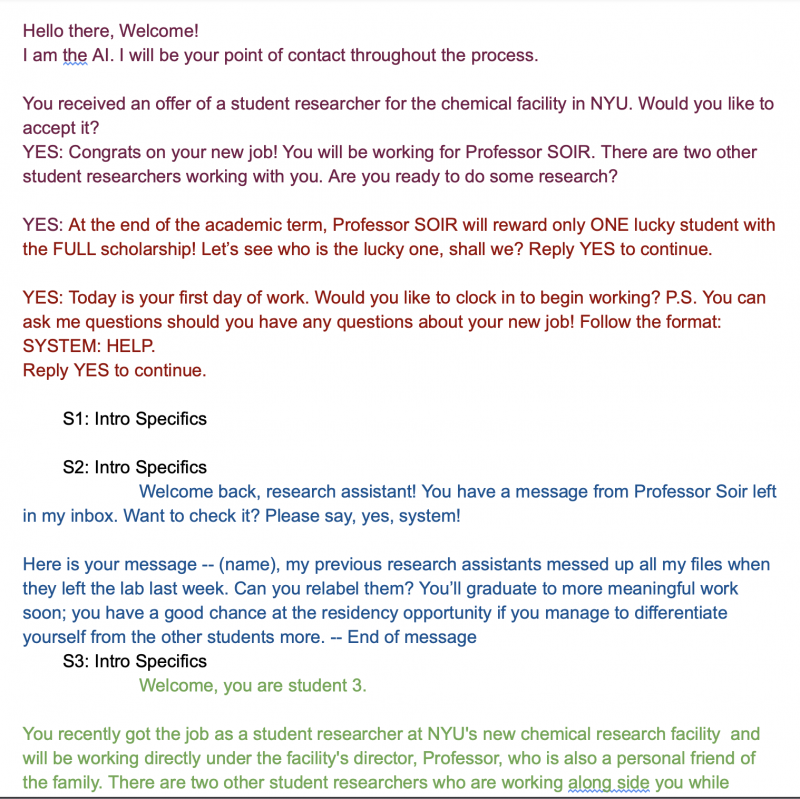Escape Room to Escape Zoom
Over the past six weeks, our class has been working hard to develop, produce, test, and improve what has be come “Professor Sior’s Escape Zoom”—an online escape room completely created during, and for times like, the Age of the Corona Virus. Our game slowly took form by folding in a mix of puzzle logic and suitable storyline and gradually melding them to form a fun, cohesive experience to be shared with others.

This semester, we faced a unique task—creating a virtual escape room by transforming a fabrication-heavy project to exist on an online collaborative platform. Fortunately, there were a number of resources available to us such as Google Docs and Google Drive, Zoom, and free photo editing software. We combined puzzle styles with story to build to an adventurous escape while allowing for player agency in deciding the course of the game. Having had a professor who had taught the class before as well as classmates that had frequented escape rooms was also a major asset.
Things weren’t all smooth sailing for this course, though; however, it absolutely could have been rougher. We had a number of major challenges facing us including students in different time zones (and hemispheres), issues with language subtleties, and several missed opportunities for communication. That said, we worked well together as a team and met regularly to ensure we had a fun game for players to play and that they had the best experience possible while they played.
Promotion (Whoops!)
We used Eventbrite to promote the Escape Zoom’s play dates. One of our teammates volunteered to set up and keep track of the dates and players. Using Eventbrite for the setup seemed to work really well. In the end, I was able to game master a couple of the play tests on April 30th and May 1st and attend all the other play tests.
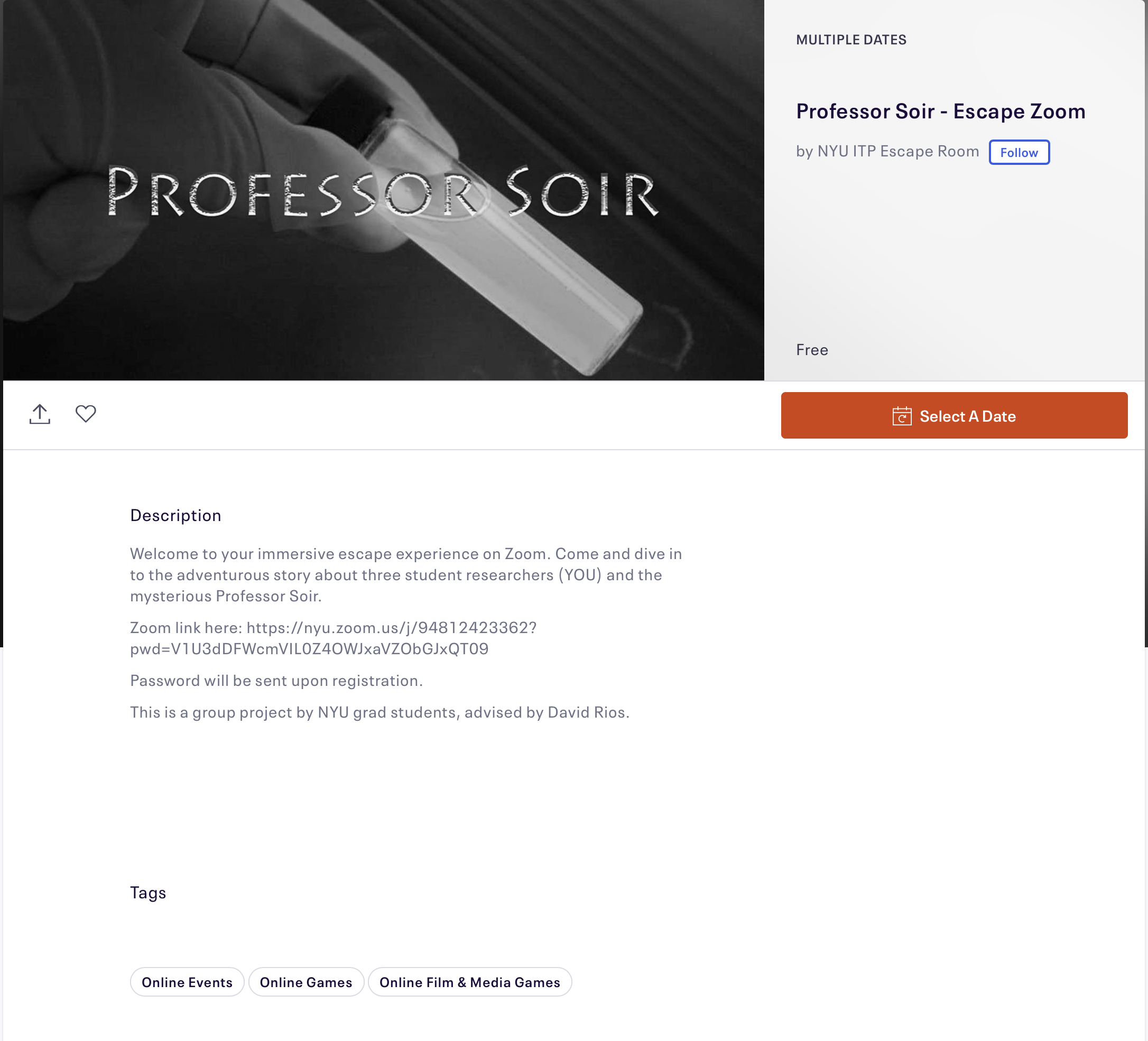
We had a good reminder of an important life lesson, the one I like to call “Don’t give customers a table until you’re ready for them.” In this case, I’m referring to our lapse in communication and collaboration as a team in planning—specifically, when we created time slots, which filled quickly, for games we hadn’t figured out how to support. It really stung that we’d taken so much care to prepare a good experience for player once they arrived and totally fumbled the experience leading up to it by having to cancel most of the scheduled games. I’ve stubbed my toe on stuff like this several times in life and feel that the team was presented with a valuable life lesson, albeit at the expense of a dozen or so hopeful participants:
A bit more communication before action can really go a long way—especially in a team environment.
Planning
In addition to using online collaborative software such as Google Docs and Drive, we used Doodle (a survey scheduling site) to come up with dates when people would be available to game master (GM) the Escape Zoom. Throughout the semester, we used Discord to keep in contact. Leaving messages on our shared channel allowed people in different timezones to keep in contact.
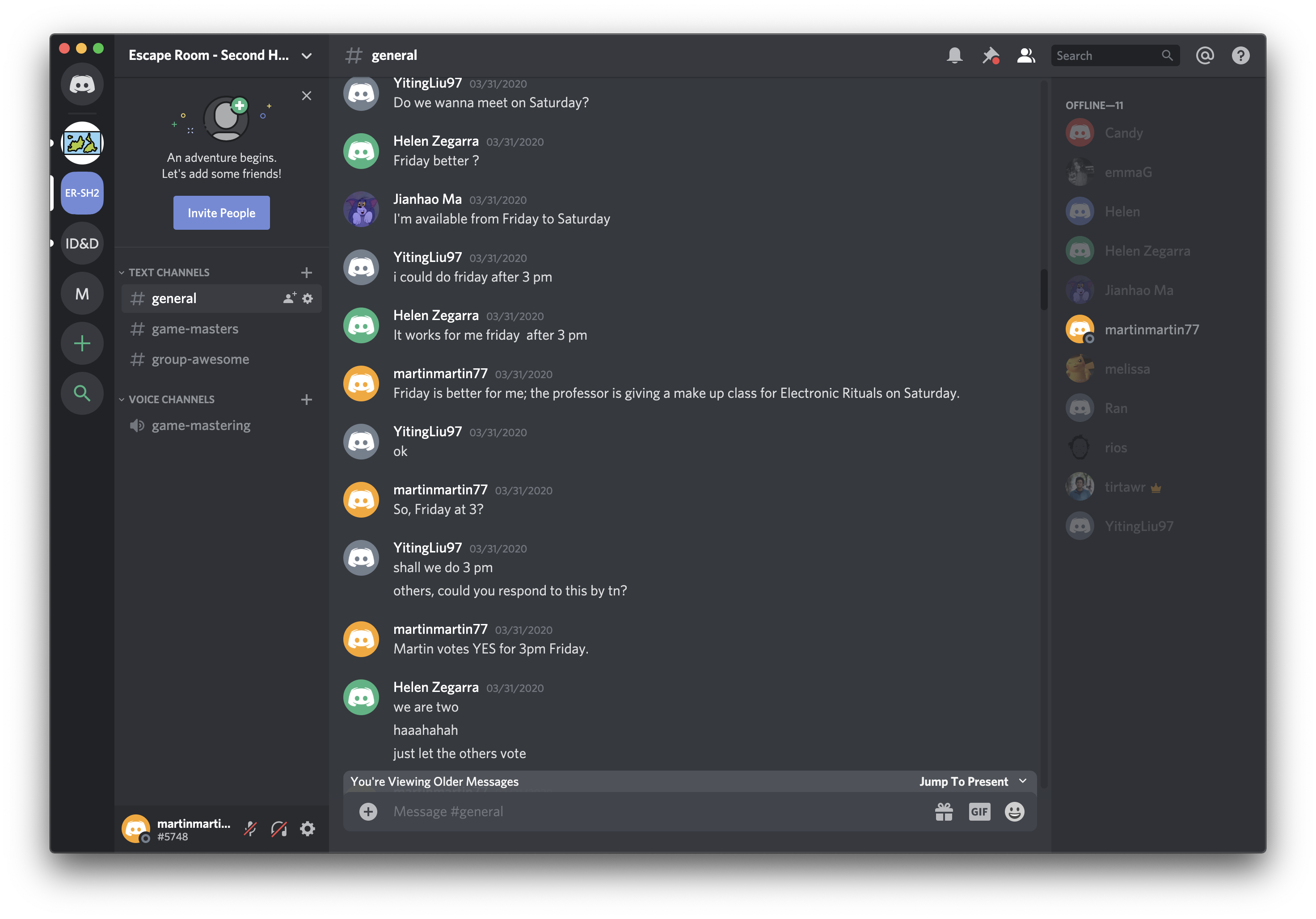
In addition to our weekly Tuesday-at-9AM class, we also had weekly meetings on Friday at 3PM NYC time for an hour or few, whether we really had any set agenda or not. Our professor, David Rios, was super cool to take a ton of time to join us during these meetings and provide excellent feedback and direction. He could have definitely taken a stronger hand in influencing the direction of the class this semester, but he didn’t. I really appreciated the opportunity to throw around ideas with very few limitations.
Execution
When it came to executing the game, our setup was as follows: Our game took place on the front end via Zoom. All classmates GMing the game were made co-hosts. There were three principal GMs, one for each of the three players. We also had people in charge of playing sound effects (such as cave background sounds and a ticking timer in the escape phase) and photoshopping an escape room souvenir to show the players at the end of the game. To begin, we had the players follow a Zoom link and wait until they were admitted to the room. The players were greeted and welcomed by one of our GMs and advised of a few procedural items.
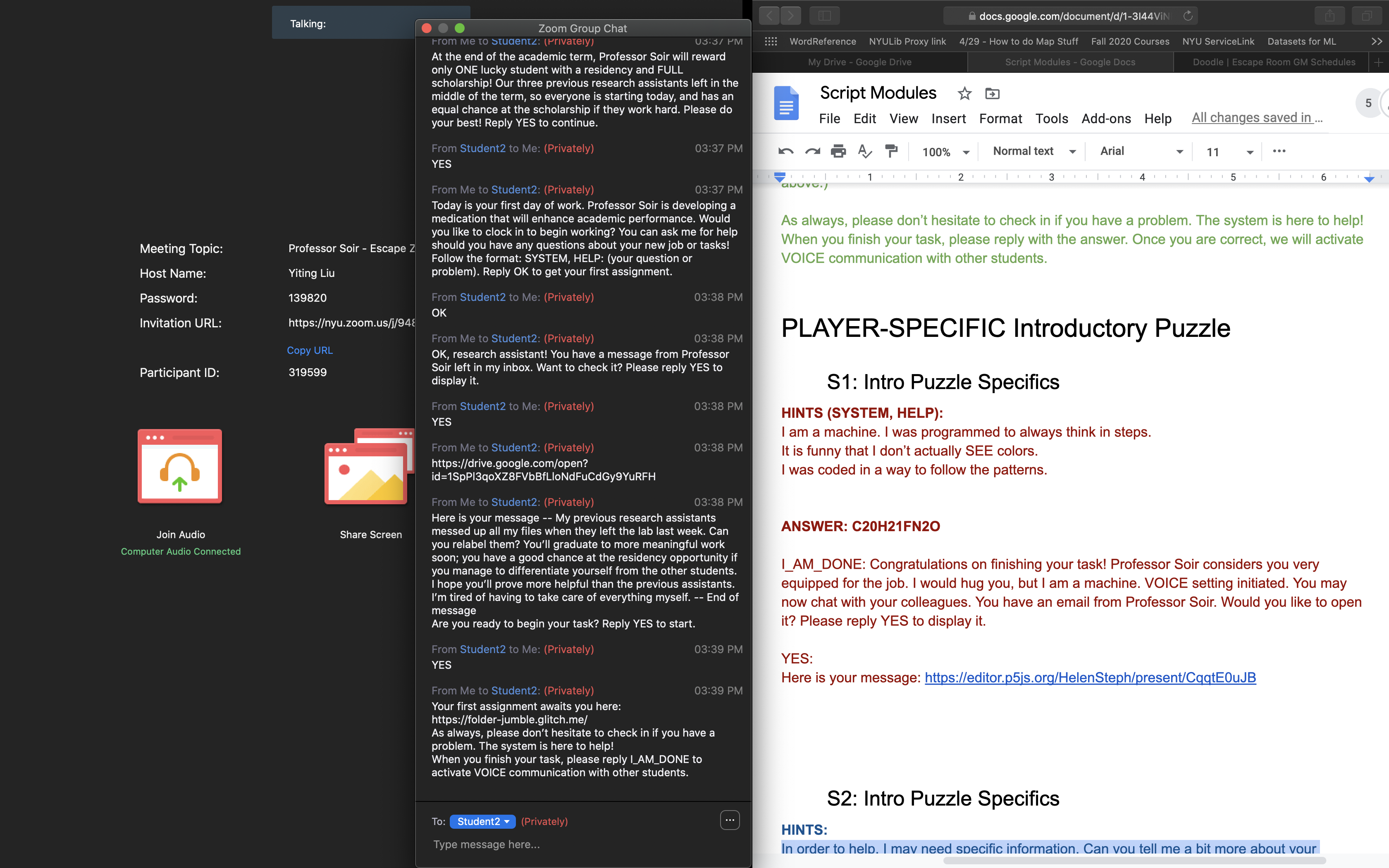
Once the players entered the Escape Zoom, their mics and cameras were turned off. In the introduction, they were discouraged from communicating with each other directly during their first puzzle. The players were direct messaged by their designated GM for their first puzzles and remained in direct contact with them until everyone finished their individual puzzles. After player 1 (Student 1) finished her puzzle, her mic and video feeds were turned on. Same for player 3 (Student 3). Because the puzzles for player 2 (Student 2) transitioned into one another directly, there was no way of telling when Student 2 had finished her puzzle, so we turned her mic and video on when Student 1’s were turned on. For the rest of the game, they are able to see and hear each other as well as use chat.
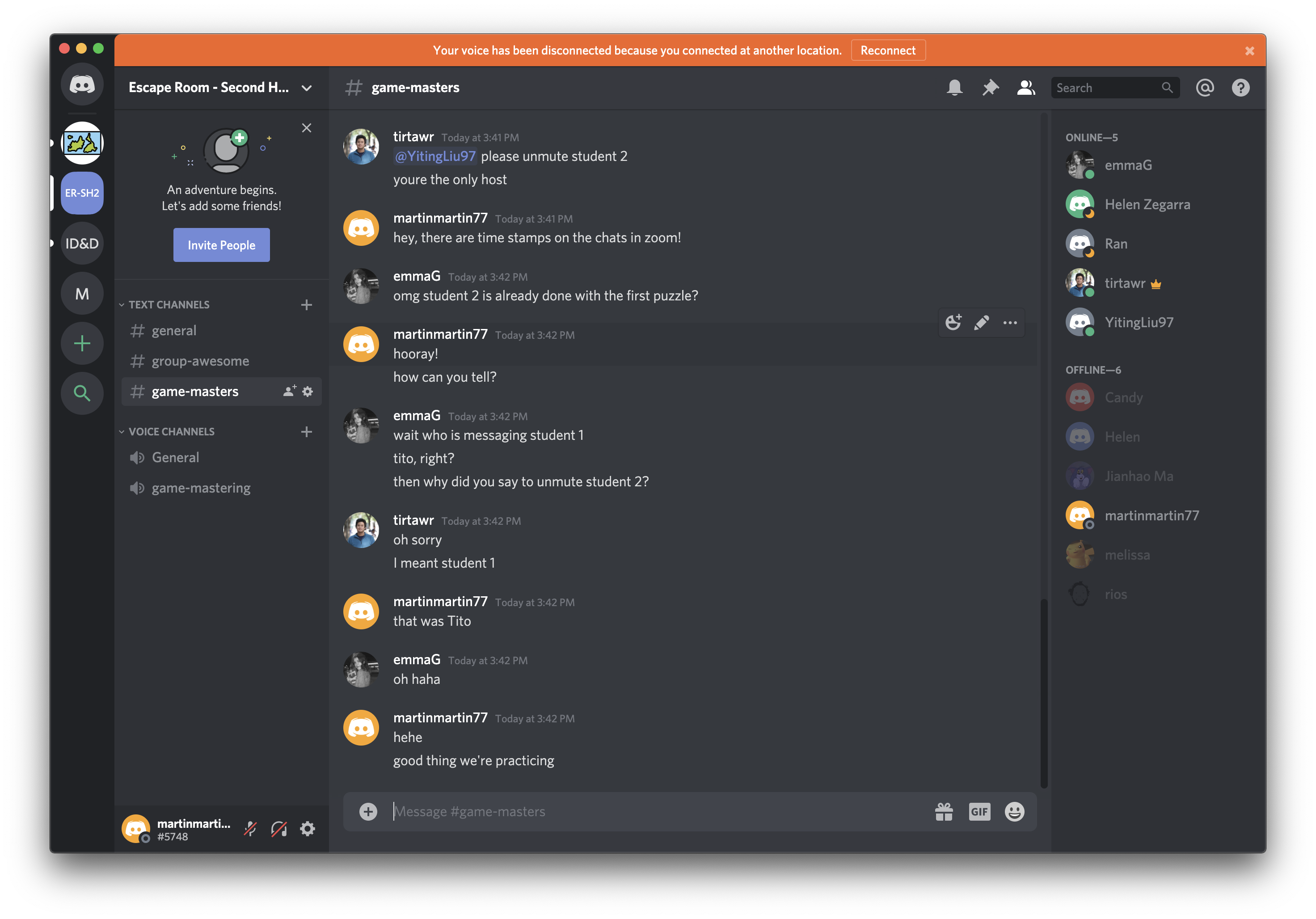
On the back end, we created a channel for game mastering on Discord and had a shared script in Google Docs with the messages to the players for the GMs to paste into chat. The messages included the links to the puzzles and the prompts needed to be received by the players in order to continue forward with the game.
The Game
So, the game’s parts went through several iterations over the weeks. We started off adding puzzles to our narrative the second week of class. From there, we kept adjusting the puzzles and then the storyline to accommodate our desires for the escape room. Below is an example of our first game flow chart.

When you look at the newer version, you can see it’s been streamlined to reflect the changes we made in the game—both puzzle-wise and story-wise.
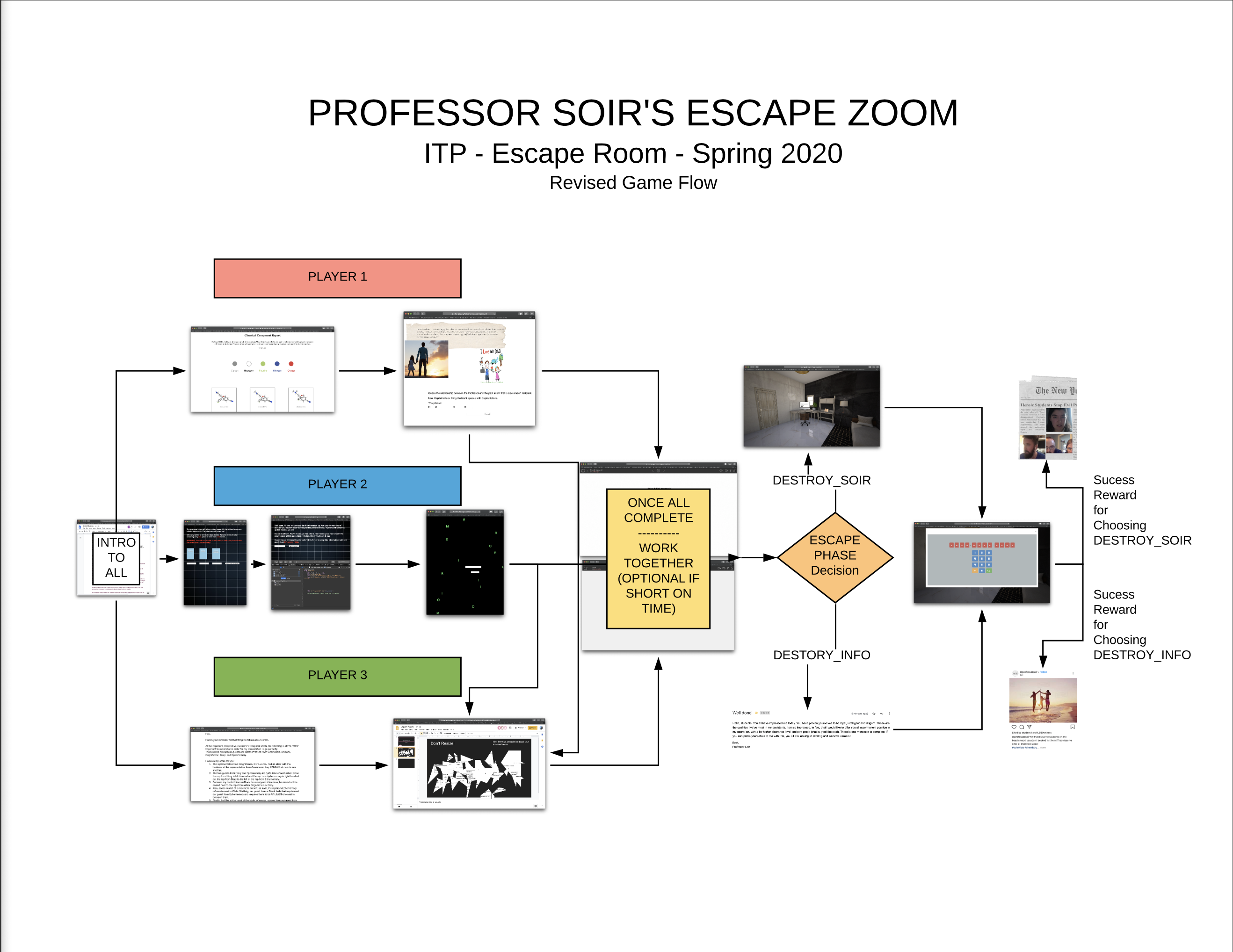
The Story
As you can see from the bottom chart of the revised game flow, the game provided three different routes for players to work individually before coming together. We started out by talking about the puzzle in parts with the first part being simpler warm-up puzzles, which we called the the INTRODUCTORY PHASE. The next part would be the INVESTIGATIVE PHASE, which is where the players (known as students) would learn more about the mysterious professor they’ve been working for and finding out he’s not such a good guy. And, finally, was the ESCAPE PHASE where players would become trapped before escaping.
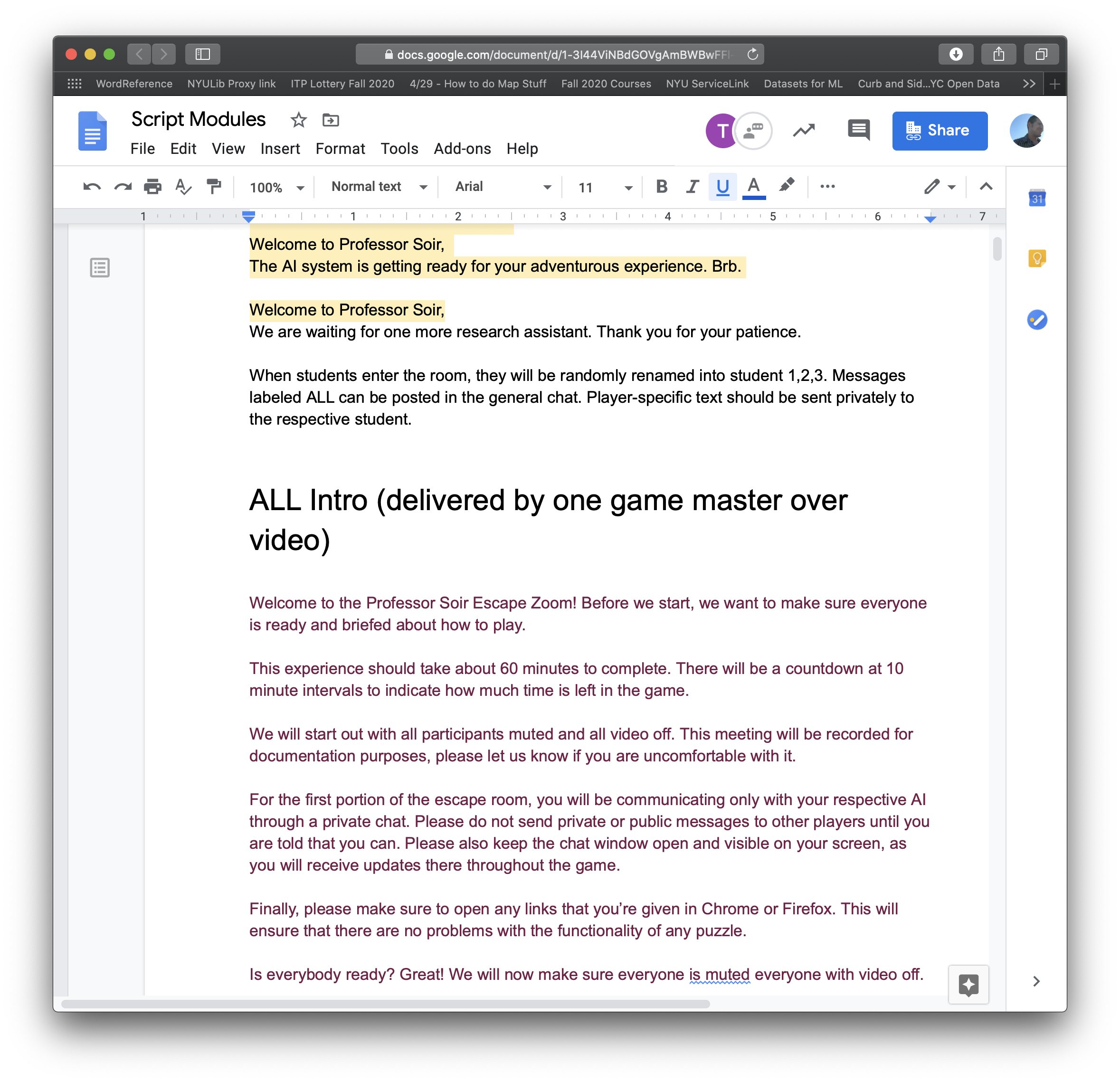
What we ended up with was a way for players to begin separate and slowly start working together before being asked to make a group decision to either expose the evil professor or flee with him—either way, if they don’t complete it in under (a flexible) 20 minutes, they’ll be trapped! To give you a feel, here is the intro we gave to each of them:
Hello there, welcome!
I am the AI system at the lab. I will be your point of contact throughout this process.
The AI system functions on multiple levels: you will be in contact with me through the channel labeled with your student number. For example, student 1 uses AI_SYSTEM 001.
In order to play – I will need to turn your video on and microphone on before the end of the game. Do I have your permission to do so? Please reply YES to continue.
YES:
Congratulations on your new job as a research assistant! You will be working for Professor Soir. There are two other research assistants working with you. Are you ready to do some research? Please reply YES to continue.
YES:
At the end of the academic term, Professor Soir will reward only ONE lucky student with a residency and FULL scholarship! Our three previous research assistants left in the middle of the term, so everyone is starting today, and has an equal chance at the scholarship if they work hard. Please do your best! Reply YES to continue.
YES:
Today is your first day of work. Professor Soir is developing a medication that will enhance academic performance. Would you like to clock in to begin working? You can ask me for help should you have any questions about your new job or tasks! Follow the format: SYSTEM, HELP: (your question or problem). Reply OK to get your first assignment.
OK:
Ok, research assistant! Your first task awaits you here:
(Players were then given the link to the first puzzle)
To stay on top of all the changes we were making to the game, we set up a shared Google Drive folder and used to store such things as our brainstorming ideas, iterations of puzzles as well as alternate puzzles, feedback from play testing, and even our script guide, like the one above. If you have access to an NYU.edu account and would like to view a PDF of the script for Professor Soir’s Escape Zoom and links we used for our final puzzle, you may access it here.
If you’d just like to see what the experience would have been like as a fly on the digital wall, you can check out a video of one of our play tests here:
The Experience
By far, the most fun part of this class was being present during game play sessions. While I personally enjoyed playing the role of Game Master the most entertaining and insightful, even being present for game play helped understand where the snags existed and improvements could be made. By the last session, I’d even heard the players professing love for one another, though these participants knew each other. Still it was a great rush to be witness to their relief and excitement as they finished the last puzzle and successfully escaped! One piece of feedback I particularly loved came from the love-professing group, one said, “That’s the most together I’ve felt with people compared to any of these other Zoom things we’re doing.” I’ll take that as a major win for our Escape Zoom!
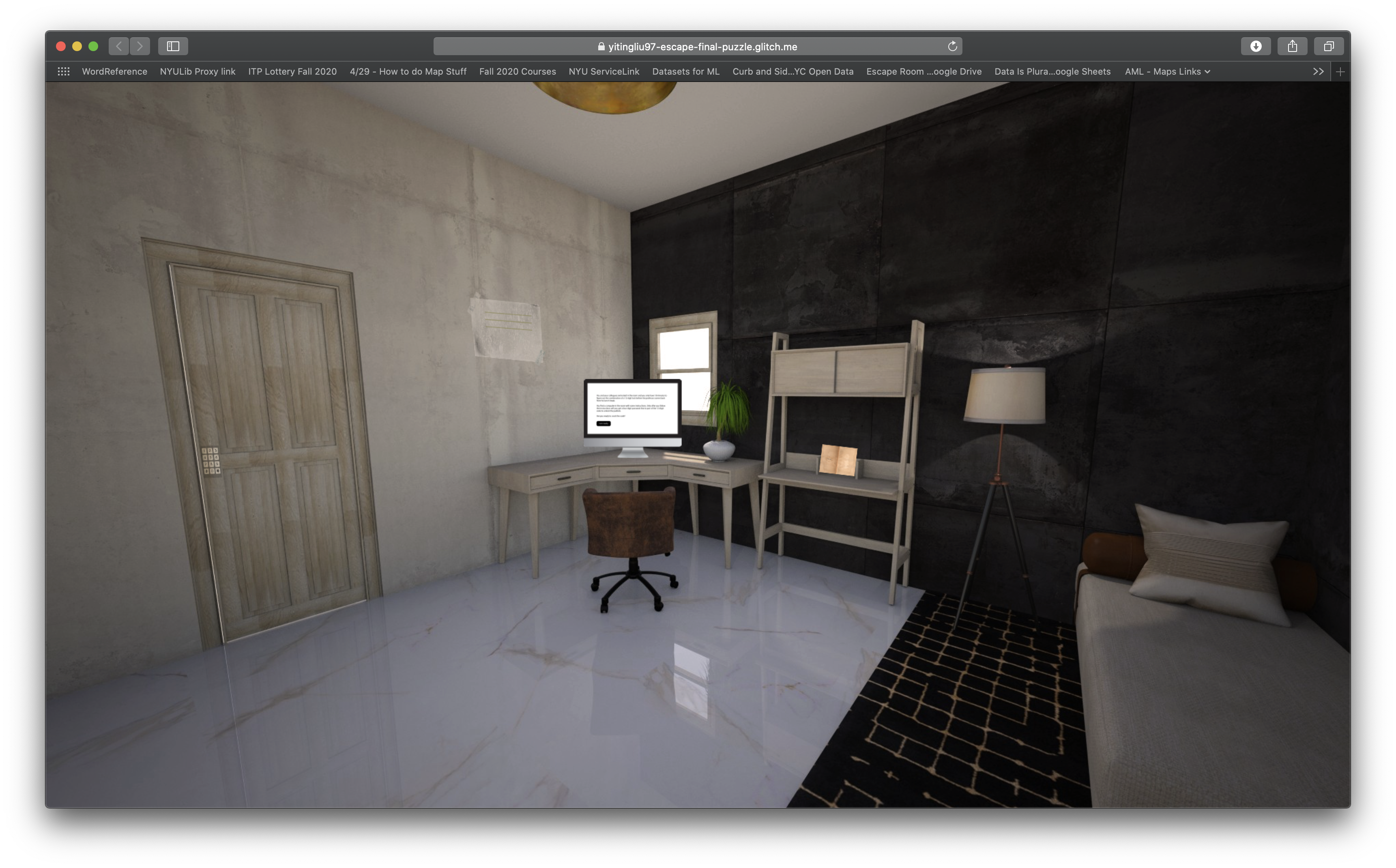
A big part of this process is testing, getting feedback, and improving (and repeating), so we ran a number of play tests in hopes of getting more feedback. Before play testing the whole room, we each tried running our puzzles by others so we could improve the experience on that level and even came up with alternate puzzles to use, just in case. In the end, we used a sign up sheet for the puzzles and massaged their order and level of difficulty to make it work. Because the story was being fleshed out as the puzzles fell into place, adapting the narrative to the changes was quite simple.
Feedback
Some of the feedback we got was about pacing; most everyone felt that they were taking too long while they were doing the puzzles and that they “should have gone faster” to get to the end. The most common feedback that stood out to me was 1) that players didn’t see all the messages in Zoom, 2) that some of our puzzles–particularly the jigsaw puzzle–was too difficult, and 3) that the last section of the game (the Escape Phase) really felt like an actual escape room! This last comment made me especially happy to hear. I had struggled with the idea of not having anywhere to escape FROM when we started the class. I had toyed around with the idea of having a scenario where instead of working to escape, the players could be working to trap someone, but didn’t get the support I had hoped for. Fortunately, we were able to talk through the idea of having an escape in some form involved and get to where we created the Escape Phase.
Another thing I really appreciated was how participants consistently said that having hints didn’t take away from their sense of compliment when they completed a puzzle. I was so hesitant to throw hints at the players because I thought they might have their chance at having a fair shot at playing the room tainted by too many hints. Though I really would have liked to have been able to tweak the puzzles to get them to where they took the time we wanted them to without having to give players clues, I’m so glad this didn’t negatively impact their experiences.
Additionally, I was really surprised that, as of the start of the final play test, we hadn’t had any groups opt for the alternate ending (to flee with Professor Soir—DESTROY_INFO option.) Fortunately, we had planned out the alternate ending—a slightly modified storyline for the same puzzles—as the very last group decided to be punks. When we hadn’t had any takers on the option to help the professor before then, I was sure people thought they weren’t supposed to pick that scenario. I really appreciate that our final play testers proved me wrong!

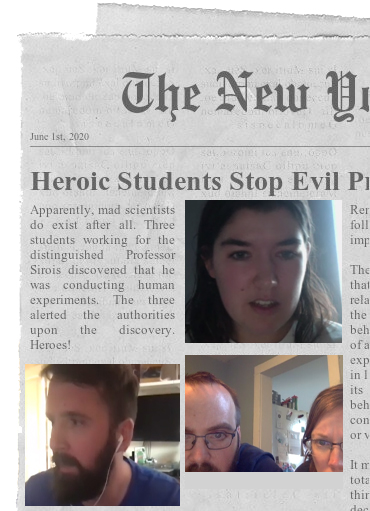
In the end, we were able to use a lot of the feedback to improve the game from one session the next. One, for example, took until the very last play test to implement. To overcome one major issue we kept coming across—specifically, that players were missing messages sent in the Zoom chat, we made change to the game that took advantage of Zoom’s sound capacities. We used Google’s text reader to play hints for the players via the audio channel.
That said, there’s the other side of the coin. Specifically, though players complained the jigsaw puzzle—Player 3’s final individual puzzle—was rough, for our game, we depended on that puzzle’s difficulty of to pool all the player and get them working together before asking them to make a group decision. True, the puzzle could have been a bit less difficult, but, too easy and the dynamics of the game would have changed significantly.
Final Impressions
I took this class really looking forward to pushing myself to do more with physical computer and fabricating, especially after such a horrible professor last semester (just kidding, Professor Rios), but ended up pushing myself in different ways. The constraints imposed upon us because the quarantine turned the world upside down and this class was no exception. Our class first met the week following Spring Break, after our in-person classes were moved online, so we were never all really in the same room physically. I don’t know where I expected the class would take us at the start of the course, but I’m really happy with our final product.
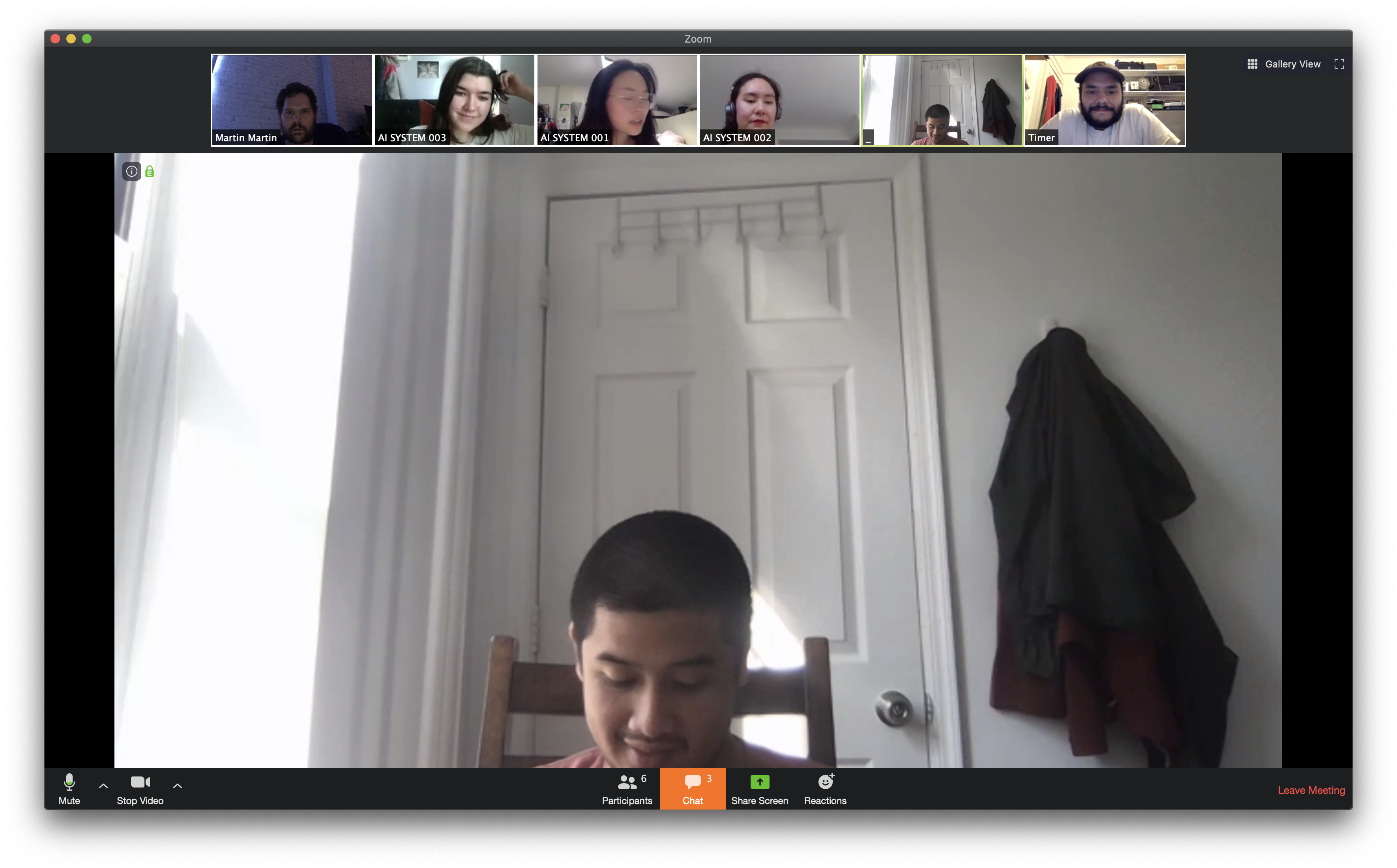
Hearing people say that they felt like they were doing an actual escape room after finishing our Escape Zoom was something I didn’t expect to hear. It’s really amazing to think that we’ve been able to transform the much-maligned Zoom room space into an exciting Escape Zoom environment! I would love to GM our project more and get people’s reactions and suggestions, so I hope people express interest and we’re able to give Professor Soir a few more exciting runs!

